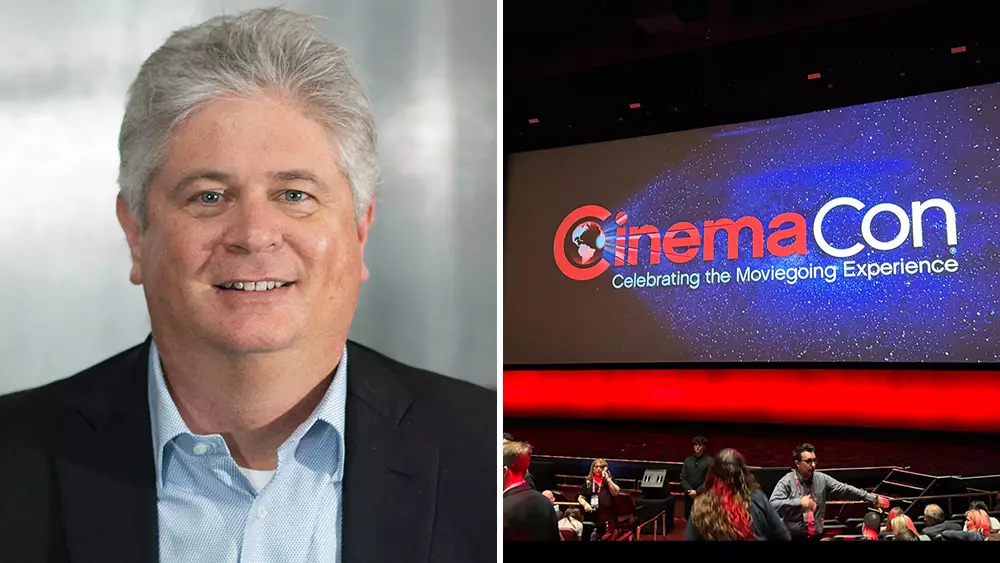In an era dominated by rapid digital consumption and the immediacy of at-home viewing, Michal O’Leary’s plea for a 45-day window of exclusivity for theatrical releases stands as a beacon of reason. The president of Cinema United adeptly highlighted how shortening this window undermines the box office potential of independent films, while prematurely favoring blockbusters at the risk of suffocating a diverse cinematic landscape. The crux of O’Leary’s argument is compelling: a commitment to a consistent 45-day exclusivity isn’t merely a guideline; it’s a vital lifeline for the industry. A system that allows for proper exploration of consumer demand will not only bolster the viability of smaller releases but also nurture the very ecosystem that supports blockbuster films.
Such a stance resonates with those frustrated by the relentless push for instant gratification and convenience that digital platforms promote. While technological advances and changing viewer preferences are inevitable, the cinema experience offers something inherently unique that streaming cannot replicate — the shared communal atmosphere, the anticipation before a film, and the immersive qualities of a large screen. By establishing 45 days as a standard, theaters can optimize their marketing endeavors and create a cycle of engagement that fosters a deeper connection with audiences.
Marketing Emphasizing “Only in Theatres”
O’Leary’s observation regarding the marketing strategies of films is equally significant. The increasing visibility of “see-at-home” options during a film’s theatrical run dilutes its allure and detracts from its commercial viability. A clear and resounding commitment to promote theatrical experiences exclusively — encapsulated in the phrase “Only in Theatres” — could reignite interest and urgency in moviegoers. The stark distinction between the home-viewing option and the theater experience must be emphasized, ensuring that audiences do not default to the convenience of their living rooms.
Imagine a theater’s marketing strategy that truly embraces the essence of cinema: tailored previews, suspenseful trailers that draw the audience in, and a preshow experience that amplifies the excitement of watching a movie on the big screen. This transformative marketing vision could enrich the audience’s experience, renew their enthusiasm, and ultimately drive ticket sales.
The Peril of Premium Large Screen Formats
O’Leary’s caution regarding the obsession with premium large formats (PLFS) reveals another layer of complexity in the industry. While these formats attract a certain segment of viewers, their financial implications cannot overshadow the foundational responsibilities of theater operators. If we focus exclusively on upgrading to premium experiences, we risk alienating the broader audience base that enjoys more traditional viewing experiences.
It’s essential to strike a balance. Yes, the allure of large formats can draw crowds, but the authenticity of the movie-going experience is rooted in accessibility and choice. By sidelining smaller theaters that cannot afford such extravagant upgrades, we inadvertently decimate the very diversity that enriches the cinema landscape. More so, in our quest for advancing technology, we must remain vigilant not to propagate the misconception that a viable cinema experience hinges solely on scale and size.
Revamping Scheduling Practices for Audience Engagement
Another critical aspect of O’Leary’s address revolves around scheduling practices within theaters. There is an absurdity in scheduling family-oriented films at late hours when attendance is unlikely. Such practices not only frustrate audiences but also undermine the goal of fostering a vibrant cinematic community. The idea that audiences should dictate scheduling rather than be confined by rigid studio mandates is vital in nurturing loyal moviegoers who return again and again.
Independent theaters must gain more autonomy in their scheduling decisions. The current system, which binds them to often arbitrary restrictions, stifles creativity and engagement. Allowing these operators to tailor their programming ensures that they can cater to their specific community’s needs, fostering an ecosystem where indie films can flourish alongside mainstream hits.
Adapting to the New Normal without Losing Roots
O’Leary’s closing assertion speaks volumes: the cinemas must adapt to new norms without losing sight of what truly matters. The post-pandemic world is one fraught with potential yet littered with nostalgic sentiments for a time when cinematic experiences thrived. The industry cannot afford to hold on to outdated practices that hinder growth. The balance between responding to the market’s needs while respecting the tradition of cinema is intricate yet crucial for long-term viability.
In an industry marked by disruption and change, the key takeaway from O’Leary’s insightful address is that theaters must prioritize their role in the cinematic experience. Fostering collaboration and focusing on sustainability rather than being swept away by fleeting trends are vital. The theatrical landscape should be one where both blockbuster and indie films coexist, and where audiences can find diverse stories that resonate with their experiences, cultural backgrounds, and aspirations.

